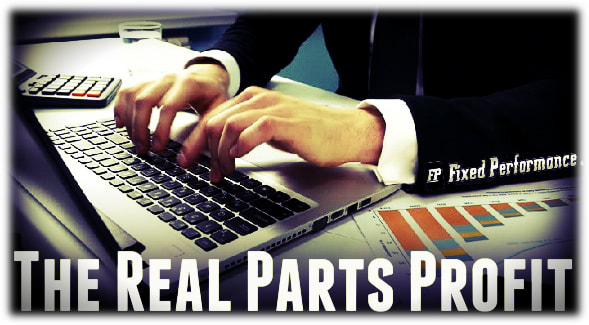The Real Parts Profit

Most dealers are bottom line performance individuals and start there when reviewing a financial statement. Parts Departments have some interesting considerations that should be understood when reviewing their financial performance. Many dealerships don’t utilize G&A accounting that separates General Management, Dealer, and office personnel into a separate account. I prefer this separation when analyzing the financial performance of fixed operations because this inflates expenses such as personnel above the real result of the department. Advertising is another expense that may be divided amongst fixed operations departments even though it was used to promote sales. Gross profit transfer that takes 50% of customer pay from the parts Department into service is another factor that should be considered when evaluating parts department performance. I have seen departments that look great on paper however, they have accounts receivable so past due and uncollectible they will eventually be written off. I’ve seen parts departments lose hundreds of thousands in aged inventory that will never be sold. Gross profit margins have become more critical as most states developed laws that allow dealers to collect retail margins on warranty parts repairs. Many dealerships demand gross profit margins be reduced substantially on the internals to reduce the cost to the used car department and reduce gross in parts. Some dealers and General Managers instruct their parts managers not to exceed a certain value in inventory investment. This could restrict technician fill rate and reduce efficiency in the service department costing hundreds of thousands over a year. True inventory turnover is another indicator of parts performance. If the number is too high on turnover service suffers and if low the dealership will never produce a good return on inventory investment. Today’s parts managers are in a constant juggling act attempting to balance manufacturers loyalty and compliance with their programs and being profitable for their dealership. The parts department is criticized often for excessive pricing or performance however, not recognized for the amazing details required on a daily basis to maximize performance for everybody including the customer. If you are blessed with a parts department manager that balances these key performance indicators well and understands how to put this complex puzzle together thank them often. Never forget the charges and factors that affect financial results before you complain about bottom line performance.
Sincerely,
Rob Gehring, President
Fixed Performance Inc.
rgehring@marginplus.net
1-888-205-8718
Fixed Performance complete fixed operations coaching consulting